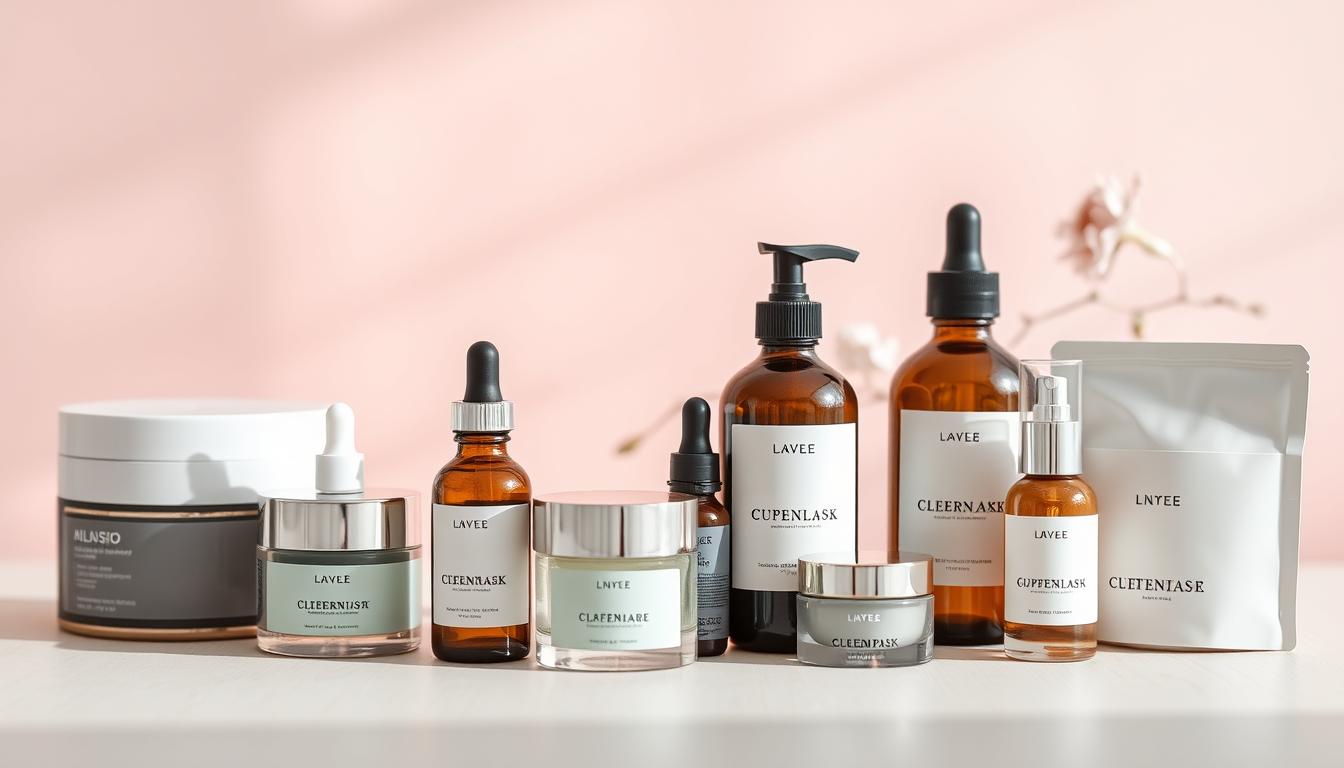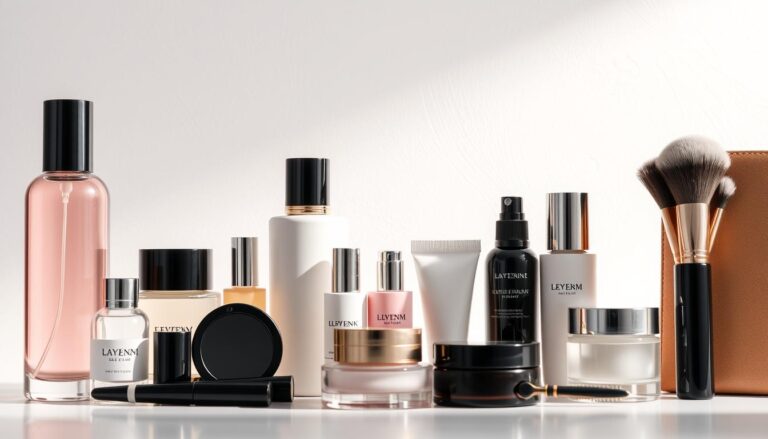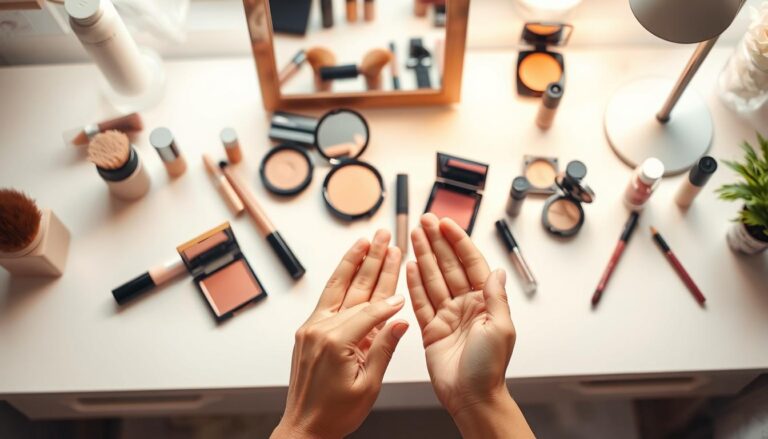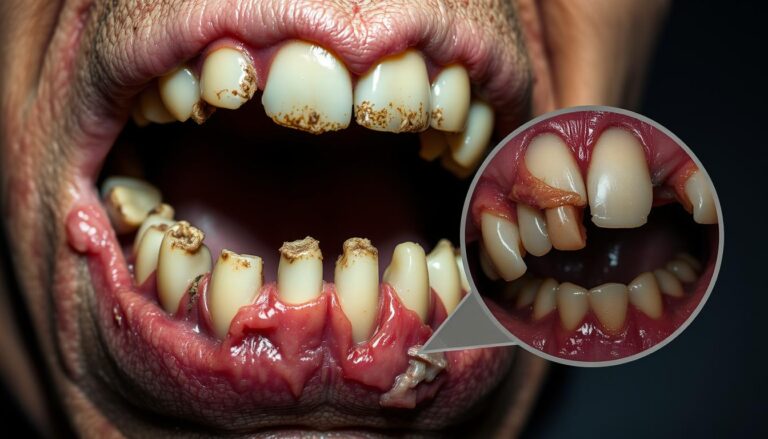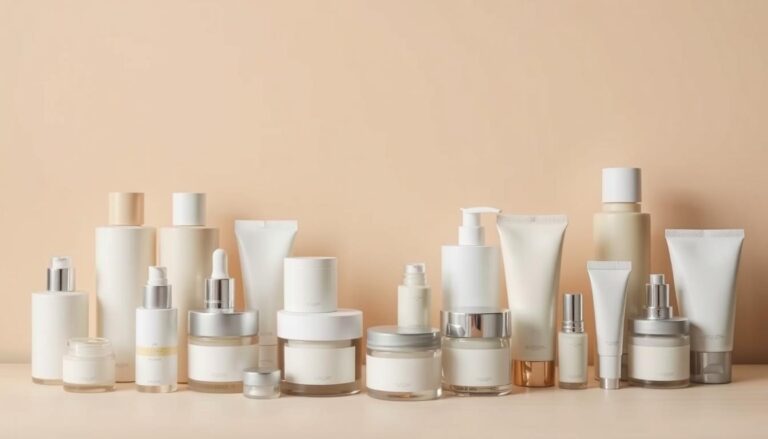How to Build the Perfect [Skin Care Routine] in 5 Steps
Table of Contents
Skincare can feel overwhelming. I remember staring at countless bottles, feeling lost and frustrated. I wondered if I’d ever unlock the secret to radiant, healthy skin.
The truth is, a perfect skin care routine doesn’t need a cabinet full of products. It doesn’t require hours of complicated steps.
Skincare experts agree that a simplified approach can dramatically transform your skin’s health. By focusing on essential steps and understanding your unique skin needs, you can create an anti-aging routine that truly works. Your skin doesn’t need dozens of products – it needs targeted, consistent care.
A streamlined skin care routine can help protect against the 90% of skin aging caused by UV radiation. It keeps your complexion glowing and healthy. With the right moisturizers and a strategic approach, you can achieve remarkable results without complexity.
For an elegant body and an attractive face, you must get rid of excess fat with this wonderful nutritional supplement. Your life will be happy
Key Takeaways
- Simplify your skincare routine for better results
- Focus on essential steps that address your specific skin concerns
- Consistency is more important than multiple products
- Protect your skin from UV damage with targeted treatments
- Choose multi-functional products that offer maximum benefits
Understanding Your Skin Type and Needs
Figuring out your skin type is key to a good skincare routine. Each type has its own needs and traits. Knowing what your skin needs helps you pick the best cleansers, exfoliants, and serums for health.
Normal to Dry Skin Characteristics
Normal to dry skin needs gentle, hydrating care. Signs include:
- Feeling tight after washing
- Potential flaking or roughness
- Less natural oil
For dry skin, use moisturizers with hyaluronic acid and ceramides. These strengthen the skin and keep it moist.
Oily and Combination Skin Indicators
Oily and combination skin need careful product choices. Signs include:
- Shine in the T-zone by midday
- Frequent breakouts
- Large, visible pores
For oily skin, try products with salicylic acid and niacinamide. They help control oil and even out skin texture.
Sensitive and Acne-Prone Skin Concerns
Sensitive skin needs the gentlest care. Watch for:
- Often red or irritated
- Quickly reacts to new products
- Allergic reactions
Opt for fragrance-free, hypoallergenic products to avoid irritation.
Knowing your skin type helps you choose the right skincare. This ensures your skin gets the care it needs.
| Skin Type | Key Characteristics | Recommended Ingredients |
|---|---|---|
| Dry Skin | Tight, flaky, rough texture | Hyaluronic acid, ceramides |
| Oily Skin | Midday shine, enlarged pores | Salicylic acid, niacinamide |
| Combination Skin | Mixed oil production zones | Balanced gel-based products |
| Sensitive Skin | Reactive, prone to irritation | Fragrance-free, soothing ingredients |
Essential Components of a Skin Care Routine
Creating a good skincare routine means knowing the important parts that work together. Dermatologists say it’s best to have a plan that covers all your skin’s needs.
Your basic skincare routine should have five main steps:
- Cleansing to get rid of dirt and impurities
- Toning to balance your skin’s pH and get ready for treatments
- Treating specific skin issues like acne
- Moisturizing to keep your skin hydrated and safe
- Sun protection to avoid damage
Skin toners are key in getting your skin ready for what comes next. 90% of dermatologists suggest using a gentle, alcohol-free toner. This keeps your skin balanced without taking away its natural oils.
Targeted treatments are important for dealing with specific skin problems. For acne, 40% of people use spot treatments with benzoyl peroxide or salicylic acid. These help control breakouts and stop new problems from starting.
Sun protection is a must in any skincare routine. 80% of dermatologists say to use sunscreen every day with SPF 30 or higher. This helps lower the risk of skin cancer and stops early aging.
Consistency is key: 55% of users see big improvements in their skin health with a regular skincare routine.
Remember, your skincare routine should fit your unique skin type and issues. Try different things and adjust until you find what works best for you.
For an elegant body and an attractive face, you must get rid of excess fat with this wonderful nutritional supplement. Your life will be happy
Morning Cleansing and Preparation
Starting your day with a good skincare routine is key to healthy, glowing skin. Your morning cleanse is important. It prepares your skin for the day using gentle cleansers and natural ingredients.
Gentle Cleansing Techniques
Knowing your skin type is the first step to a great morning cleanse. Experts say to cleanse for two minutes. This removes overnight buildup without drying out your skin.
- For normal to dry skin: Consider a light water rinse
- For oily skin: Use a gentle, pH-balanced cleanser
- Focus on using natural ingredients that nourish
Proper Water Temperature
Water temperature is crucial in your cleansing routine. Lukewarm water is best. It opens pores without irritating your skin.
| Water Temperature | Skin Impact |
|---|---|
| Cold Water | Tightens pores, reduces inflammation |
| Lukewarm Water | Optimal for cleansing, balanced skin response |
| Hot Water | Strips natural oils, potential skin damage |
Pat Dry Methods
How you dry your skin after cleansing is important. Gently pat your skin with a clean, soft towel. Never rub, as it can irritate your skin.
Remember: A gentle touch is your skin’s best friend during morning preparation.
Antioxidant Protection and Treatment
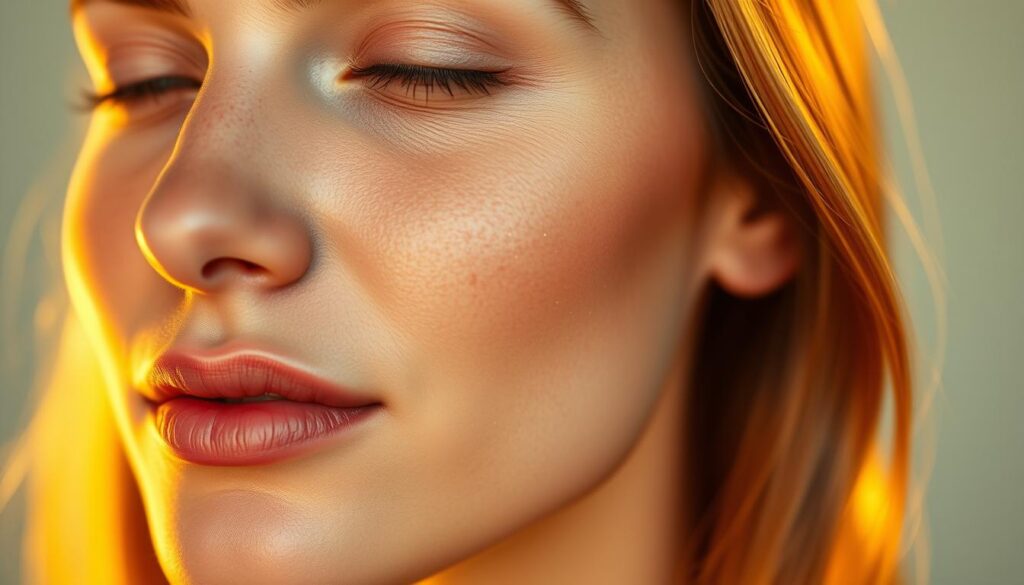
Keeping your skin safe from the outside world is key to looking young and bright. Antioxidant serums are heroes in this battle. They shield your skin from damage caused by pollution, UV rays, and stress.
Natural ingredients are strong allies against early aging. They fight off free radicals that harm collagen and speed up aging.
- Vitamin C: The gold standard in anti-aging protection
- Green tea extract: Reduces inflammation and soothes skin
- Resveratrol: Combats oxidative stress effectively
When picking antioxidant serums, think about what your skin needs. Not all antioxidants are the same for everyone. Look for these important ingredients:
| Antioxidant | Key Benefits | Best for Skin Type |
|---|---|---|
| Vitamin C | Brightens, boosts collagen | All skin types |
| Niacinamide | Reduces hyperpigmentation | Oily, combination skin |
| Vitamin E | Moisturizes, repairs skin | Dry, sensitive skin |
Start your day with an antioxidant serum to protect your skin. Use it after you wash your face and before you moisturize. This way, it absorbs best and works its magic.
For an elegant body and an attractive face, you must get rid of excess fat with this wonderful nutritional supplement. Your life will be happy
The Power of Moisturizing
Your skin is a complex ecosystem that needs careful hydration to stay healthy and bright. Moisturizers are key in protecting and feeding your skin. They act as a shield against harmful environmental factors.
Exploring the world of moisturizers can change your skincare game. Each skin type needs its own hydration strategy. So, picking the right moisturizer is crucial.
Lightweight vs Rich Moisturizers
Deciding between lightweight and rich moisturizers depends on your skin:
- Lightweight moisturizers with natural ingredients are best for oily and combination skin
- Rich moisturizers offer deep hydration for dry and mature skin
- Multi-tasking formulas with hyaluronic acid benefit all skin types
Application Techniques
To get the most out of your moisturizer, apply it right:
- Apply to slightly damp skin to better absorb
- Use gentle upward motions to boost circulation
- Pat, don’t rub, to avoid skin irritation
Timing and Absorption
| Skin Type | Optimal Moisturizing Time | Key Ingredients |
|---|---|---|
| Dry Skin | Immediately after cleansing | Ceramides, Hyaluronic Acid |
| Oily Skin | Light application in morning/evening | Squalane, Glycerin |
| Sensitive Skin | Twice daily with gentle products | Niacinamide, Aloe Vera |
Consistent moisturizing is essential for healthy, strong skin. Using natural ingredients and targeted hydration can give you a glowing, balanced look.
Sun Protection and Defense
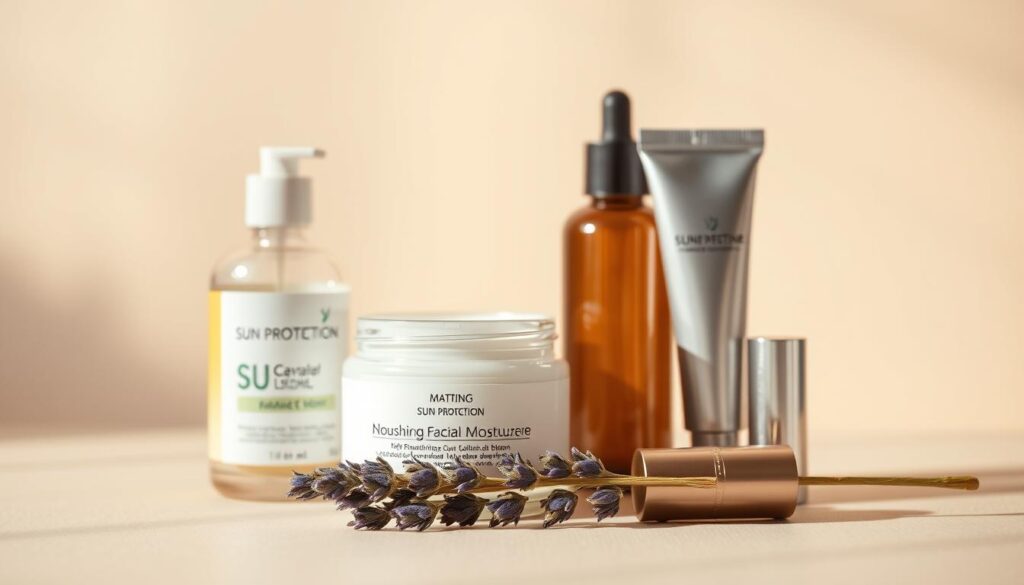
Keeping your skin safe from the sun is key to looking young and healthy. Sun protection is more than just using sunscreen. It’s a full plan to keep your skin looking good and healthy. Doctors say using sun protection every day is important to avoid early aging and lower the risk of skin cancer.
The FDA has set rules for good sun protection. Knowing these can help you protect your skin from harmful UV rays.
- Choose broad-spectrum sunscreens with SPF 30 or higher
- Apply sunscreen 15 minutes before sun exposure
- Reapply every two hours, especially after swimming or sweating
- Use at least one ounce (shot glass amount) to cover your entire body
Different skin types need different sun protection levels. Here’s a simple guide to pick the right SPF:
| Skin Type | Recommended SPF |
|---|---|
| Dry Skin | SPF 30 |
| Sensitive Skin | SPF 50 |
| Mature Skin | SPF 50 |
| Light Skin Tones | SPF 50 |
| Darker Skin Tones | SPF 30 |
Sun protection isn’t just about sunscreen. Wearing protective clothes, staying in the shade, and avoiding sun between 10 a.m. and 2 p.m. are also key. UV rays can go through clouds, so wearing sun protection every day is crucial for keeping your skin young.
Zinc oxide sunscreens work right away and are good for all skin types. They block UVA and UVB rays, helping to stop early aging and sun damage.
Night Time Skin Care Routine
Your nighttime skincare routine is key for skin repair and growth. While you sleep, your skin heals and regenerates. This is the best time to use strong cleansers, serums, and moisturizers to help your skin.
Double Cleansing Benefits
Double cleansing is a must for removing makeup, sunscreen, and daily dirt. Start with an oil-based cleanser to break down makeup and dirt. Then, use a gentle water-based cleanser to clean your pores deeply.
- Remove makeup completely
- Prevent clogged pores
- Prepare skin for treatment products
Treatment Application Order
How you apply skincare products is important. Start with the thinnest products and move to thicker ones. This means serums first, then moisturizers.
- Cleanse
- Toner (optional)
- Treatment serums
- Eye cream
- Moisturizer
Overnight Repair Products
Night is the best time for strong ingredients like retinol or bakuchiol. These help with cell turnover and address issues like fine lines and hyperpigmentation.
Pro tip: Start with new overnight repair products slowly, 1-2 times a week. This helps your skin adjust and avoids irritation.
Common Skin Care Mistakes to Avoid
Creating a good skin care routine is more than just buying products. Many people unknowingly harm their skin by making big mistakes. These errors can cause lasting damage and make you feel frustrated.
Knowing what common mistakes are can change how you take care of your skin. Research shows some surprising things that might be hurting your skin care efforts.
- Over-exfoliating can severely damage your skin barrier
- Using too many active ingredients simultaneously increases irritation risk
- Neglecting sunscreen compromises skin protection
- Introducing new products without proper patch testing
Your skin care routine should fit your needs. 60% of people use multiple active ingredients incorrectly, which can cause inflammation and sensitivity. When treating acne, using harsh products that remove natural oils can make breakouts worse.
| Mistake | Potential Consequence | Recommended Action |
|---|---|---|
| Over-cleansing | Skin barrier disruption | Limit cleansing to twice daily |
| Skipping moisturizer | Increased oil production | Use lightweight, non-comedogenic moisturizer |
| Ignoring sunscreen | Premature aging | Apply daily, even on cloudy days |
Exfoliation is another area where many people go wrong. Only 30% of skincare users introduce new active ingredients slowly. Rushing into new treatments can cause a lot of irritation. Experts suggest patch testing and slowly adding new treatments to your routine.
Remember: Your skin is unique. What works for others might not work for you.
Avoiding these common mistakes can help you develop a better, gentler skin care routine. This approach will help keep your skin healthy and glowing for the long term.
Adapting Your Routine to Seasonal Changes
Your skin changes a lot with the seasons. It needs different care to stay healthy and protected. This means changing your skincare routine with the seasons.
In winter, your skin needs lots of moisture. Cold temperatures and dry air can reduce skin hydration by up to 20%. You should use moisturizers that deeply hydrate. Ceramide-based moisturizers are great, as 65% of people find they help repair the skin barrier.
Summer is different. You need lighter, water-based moisturizers. These help with the extra oil and breakouts that happen when it’s hot. About 70% of people find their skin gets oilier and may break out more in the summer.
- Winter skincare priorities:
- Use heavier, emollient moisturizers
- Exfoliate 1-2 times weekly
- Focus on intense hydration
- Summer skincare strategies:
- Switch to lightweight moisturizers
- Increase sun protection
- Exfoliate 2-3 times weekly
Sun protection is important all year. Dermatologists say to use broad-spectrum SPF 30+ every day. UV rays can get through clouds and bounce off surfaces like snow.
| Season | Moisturizer Type | Sun Protection | Exfoliation Frequency |
|---|---|---|---|
| Winter | Rich, Ceramide-based | SPF 30+ | 1-2 times/week |
| Summer | Lightweight, Water-based | SPF 30+ Broad-spectrum | 2-3 times/week |
“Adapting your skincare routine seasonally isn’t just recommended—it’s essential for maintaining healthy, resilient skin.” – Dermatology Experts
100% of skincare experts say to make your routine personal and change it with the seasons. This keeps your skin healthy, hydrated, and glowing all year.
Incorporating Special Treatments and Masks
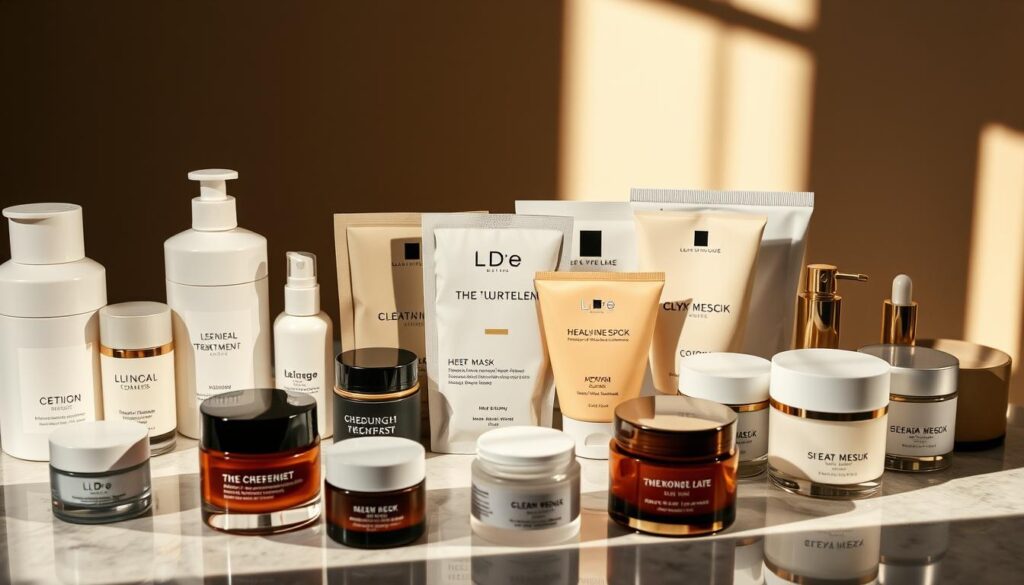
Adding special treatments and masks to your skincare routine can really help. They target specific skin issues like exfoliation, acne, and aging. This way, you get precise care for your skin.
It’s important to know how often and how to use masks for the best results. Here’s a simple guide:
- Hydrating Masks: Apply 1-2 times weekly to boost skin moisture
- Clay Masks: Use 1-2 times per week to control excess oil and minimize breakouts
- Exfoliating Masks: Limit to once every seven days to prevent skin irritation
- Brightening Masks: Recommended 1-2 times weekly for a radiant complexion
Multi-masking is a big hit for custom skincare. It lets you treat different areas of your face at once. For example, use a clay mask on oily areas and a hydrating mask on dry ones.
“Targeted mask treatments can transform your skincare routine, offering customized solutions for your unique skin needs.”
For acne, look for masks with salicylic acid and clay. They help control oil. For anti-aging, choose masks with hyaluronic acid, peptides, and antioxidants. These boost collagen and renew your skin.
Remember, always test new treatments on a small area first. This ensures they work well with your skin type.
Conclusion: Consistency is Key
Creating a good skin care routine isn’t about making it complicated. It’s about being dedicated. Dermatologists say that 70% of people see big improvements in their skin when they stick to a daily routine. The first steps are simple: clean your skin, moisturize, and protect it from the sun.
Being patient is important in your skin care journey. It can take 4-6 weeks to really see how well your routine is working. No matter your skin type, the most important thing is to keep up with a routine that fits your needs. Using the right products, like light formulas for oily skin or rich creams for dry skin, can make a big difference.
Protecting your skin is more than just using products. You also need to apply sunscreen every day, exfoliate gently 2-3 times a week, and know your skin type. Even though 80% of people feel lost in all the skincare advice, focus on simple, effective care. By being consistent, you’ll get on the way to healthier, glowing skin.
FAQ
How do I determine my skin type?
To find out your skin type, do a simple test at home. Clean your face with a gentle cleanser, then pat it dry. Wait an hour without any products.
If your skin feels tight and flaky, you have dry skin. If it’s shiny and oily, especially in the T-zone, you’re oily or have combination skin. Sensitive skin gets red or irritated easily.
If you often get breakouts and inflammation, you might have acne-prone skin.
How often should I exfoliate my skin?
How often you exfoliate depends on your skin type. Sensitive skin can only handle once a week. Oily and combination skin can do 2-3 times a week.
Dry skin should exfoliate 1-2 times weekly. Use gentle exfoliants and watch how your skin reacts. Too much exfoliation can harm your skin.
What SPF should I use daily?
Dermatologists say use a broad-spectrum sunscreen with SPF 30 daily. For more sun, use SPF 50 or higher. Reapply every two hours, especially when swimming or sweating.
Choose sunscreens that block UVA and UVB rays to prevent aging and damage.
Can I use multiple serums in my skincare routine?
Yes, but be careful. Layer serums from thinnest to thickest. Avoid mixing active ingredients that might irritate your skin.
Don’t mix retinol with vitamin C in the same routine. Use them at different times or on alternate days. Always test new products first.
How do I address combination skin?
For combination skin, use specific treatments for each area. Use light, oil-free moisturizers on oily zones like the T-zone. Use richer products on dry areas.
Use mattifying products for oily areas and hydrating serums for dry patches. Finding the right balance is key.
What ingredients should I look for in anti-aging skincare?
Look for retinol for cell turnover, hyaluronic acid for hydration, and vitamin C for brightening. Peptides help with firmness, and niacinamide evens skin tone.
Products with these ingredients can reduce fine lines, improve texture, and make your skin look younger.
How do I know if a product is breaking me out?
Watch for signs like more acne, redness, irritation, or small bumps within 2-4 weeks of using a new product. Keep a skincare diary to track changes.
Introduce one new product at a time and wait two weeks before adding another. If breakouts persist, see a dermatologist.
Should my skincare routine change with the seasons?
Yes, it should. In winter, use richer moisturizers and hydrating serums to fight dry air. In summer, switch to light, oil-free products and boost sun protection.
Adjust your routine based on humidity, temperature, and your skin’s changing needs. Always keep your skin hydrated and protected, no matter the season.

